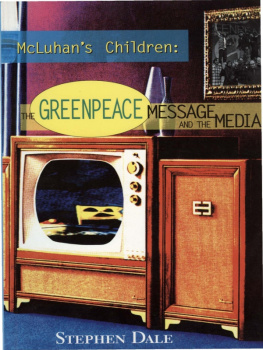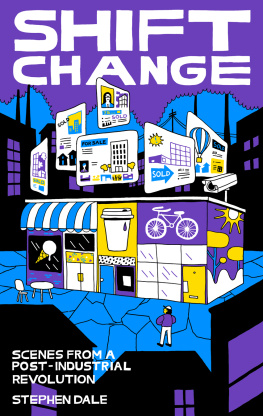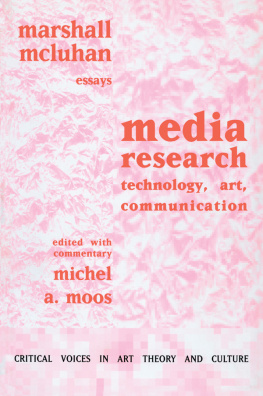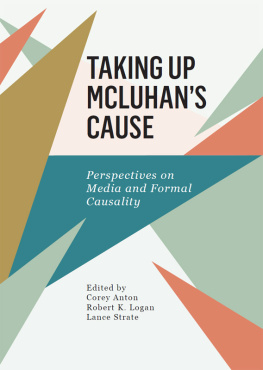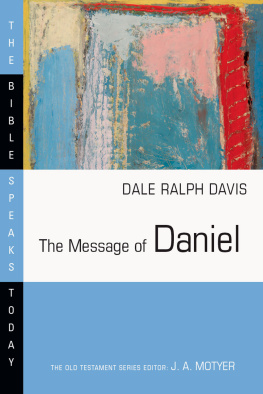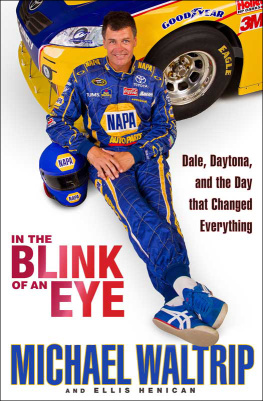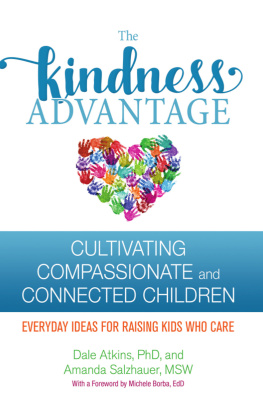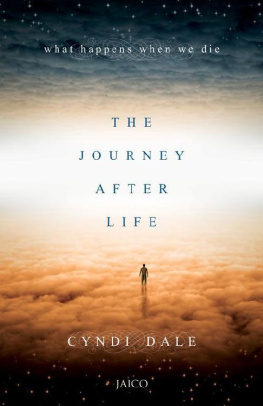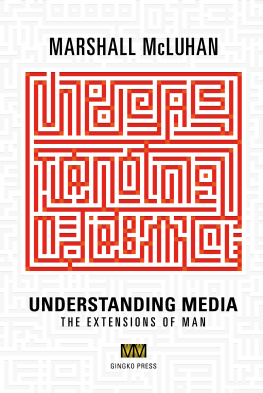MCLUHANS CHILDREN
THE GREENPEACE MESSAGE AND THE MEDIA
MCLUHANS CHILDREN
THE GREENPEACE MESSAGE
AND THE MEDIA
STEPHEN DALE
BETWEEN THE LINES
TORONTO, CANADA
McLuhan's Children: The Greenpeace Message and the Media
Stephen Dale, 1996
Published by:
Between The Lines
401 Richmond Street West, Studio 277
Toronto, Ontario M5V 3A8
Canada M5S 2R4
Cover design: Stray Toaster
Interior: Steve Izma
Cover b & w photo Robert Keziere/Greenpeace, used by permission
Backcover author photo by Laura Macdonald
All rights reserved. No part of this publication may be reproduced,
stored in a retrieval system, or transmitted in any form by any
means, electronic, mechanical, photocopying, recording, or otherwise,
except as may be expressly permitted in writing by the publisher,
or CANCOPY, (photocopying only), 6 Adelaide Street East,
Suite 900, Toronto, Ontario, M5C 1H6.
Between The Lines gratefully acknowledges financial assistance from
the Canada Council, the Ontario Arts Council, and the Canadian
Heritage Ministry.
Cataloguing data available from Library and Archives Canada
ISBN 978-1-926662-17-6 (epub)
ISBN 978-1-926662-18-3 (PDF)
ISBN 978-1-896357-04-1 (print)
THIS BOOK IS A HYBRID. IT IS PARTLY A COMMENTARY ON the mass media and partly a study of how one organization Greenpeace has built its worldwide profile and influence on an information-based strategy.
To the extent that it delves into Greenpeace history, the book is a bit like one of those unauthorized biographies: Greenpeace itself did not commission or gives its blessing to the work, and many of the people interviewed are former employees or associates who now feel no need to uphold the party line and in many cases tend to dwell on disagreements with former colleagues. Despite the unauthorized tag, however, Id like to think that my approach to Greenpeace is quite different from, say, Kitty Kelleys run at Frank Sinatra. The people who spoke to me during the course of my research many of them present and former Greenpeacers, some of them willing to talk to me about their work for many hours at a time by and large looked at this as an opportunity to reflect openly and honestly upon serious issues (such as how reliance on mass media can distort the public perception of ecological crisis, or the tendency of media-based campaigns to accentuate North-South schisms) rather than as an opportunity to propagandize.
First of all, then, Id like to offer my thanks to the people, both insiders and detached observers, who poured their reflections and recollections into my tape recorder. I hope that within these pages they can recognize themselves and the issues that confront environmentalists trying to navigate their way across the ever-changing electronic landscape. One person who merits a special thanks is David Peerla, who introduced me to many interesting people and regularly brought crucial information to my attention. Davids keen insight and on-the-ground experience (which he was always willing to share) played a key role in shaping the approach of this book.
A number of the interviews used here were originally conducted for an earlier project, a two-part radio series, Greenpeace and the Politics of Image, broadcast on the CBCs Ideas program. This book would probably not have been written were it not for the work of the CBC radio team. My thanks to Bernie Lucht for commissioning the radio series and for his hands-on work with the product. Max Allen was a masterful script-doctor; as well, Im highly appreciative of all the encouragement he has given me over a number of years. A special thanks go to Doreen Brule for her great artistry as a radio producer, her dedication, and her good humour. Jennifer Norfolks archival research was a great boon to both the radio program and the book. Thanks also to Marc Laurin, Pierre Millette, and Liz Nagy for significant contributions, technical and otherwise.
After the project crossed over into the realm of print, a number of people made invaluable contributions. Members of the board of Between the Lines reviewed various drafts of the manuscript and provided excellent suggestions and commentary. Marg Anne Morrison has been great to work with: my thanks to her and to BTL staffers Pat Desjardins and Paul Eprile. Jamie Swift provided encouragement, valuable insight, and a healthy dose of levity. And Im sure that very few first-time authors have the privilege of working with such a skilful, sensitive, and insightful editor as Robert Clarke, who greatly improved the flow and organization of the material and also brought his keen intellect and broad knowledge to bear on the subject-matter.
Laura Macdonald and Benjamin Macdonald-Dale, as always, made our house a happy place and gave me good reason to turn off the computer every now and then. They were huge in the moral support department; it is always my greatest joy to be in their company.
Finally, I gratefully acknowledge the generous support of the Ontario Arts Council and the Canada Council; without their financial assistance this book could not have been written.
CHAPTER 1
INTRODUCTION
WHEN I BEGAN THIS PROJECT, WHAT INTRIGUED ME MOST about Greenpeace was its remarkable ability to transform itself. When Greenpeace was hatched in Vancouver in 1971, it seemed unmistakably a product of its time, indelibly marked with all the quaint cultural trappings of an era that is now like a distant, vaguely amusing dream. Looking at old photographs of an early Greenpeace crew a rag-tag collection of long-haired, bearded men standing on the deck of a ship flashing peace signs is like popping a copy of Woodstock into the VCR: what leaps out from those images and into the present is a determined sense of idealism that, todays cynics would say, was clearly doomed to dissolve as the world turned harder and the drugs wore off.
In my basement is a mildewed copy of a Greenpeace newspaper from 1976. Its contents describe a movement driven by a burning, instinctive impulse to change the world a movement of heart and spirit, though without much of an intellectual road map, perhaps. The magazine is light on science, uncomplicated in its analysis, and unconcerned with the social and economic ramifications of environmentalism. No matter. In the 1970s those things were quite beside the point: like other countercultural creatures of that time, Greenpeace saw its first task not as indulging in intricate argumentation but as challenging the fundamental logic and seemingly unstoppable momentum of some dark and dangerous forces. Greenpeaces enemies were an industrial mind-set that pursued material prosperity with a blind, savage contempt for the natural world, and a war machine that didnt consider the end of life on Earth too great a price for ideological triumph. Launching its campaigns against these compelling forces, Greenpeace concerned itself with broad strokes, with changing the paradigm, with mobilizing support for the key realization that to borrow from Joni Mitchell weve got to get ourselves back to the garden.






